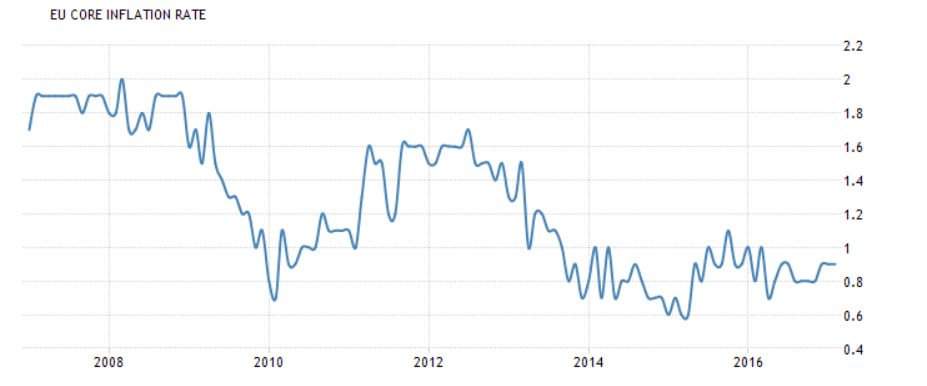Pound Goes sub-1.15 Against Euro as 1.12/1.1050 Eyed
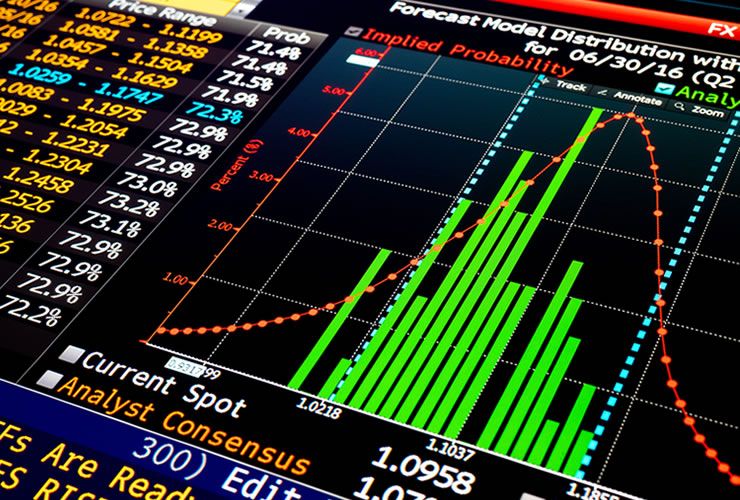
The Pound to Euro exchange rate has fallen below 1.15 to reach 1.1480 at the time of writing.
The move lower by Pound Sterling merely extends a trend of weakness that has been in place since late-February and momentum studies alone would suggest we should expect the move lower to extend.
"Market participants are keen sellers when the UK currency gets anywhere near its December highs - at 1.195 or so. Further near-term weakness now looks likely,” says analyst Bill MacNamara at brokers Charles Stanley in London.
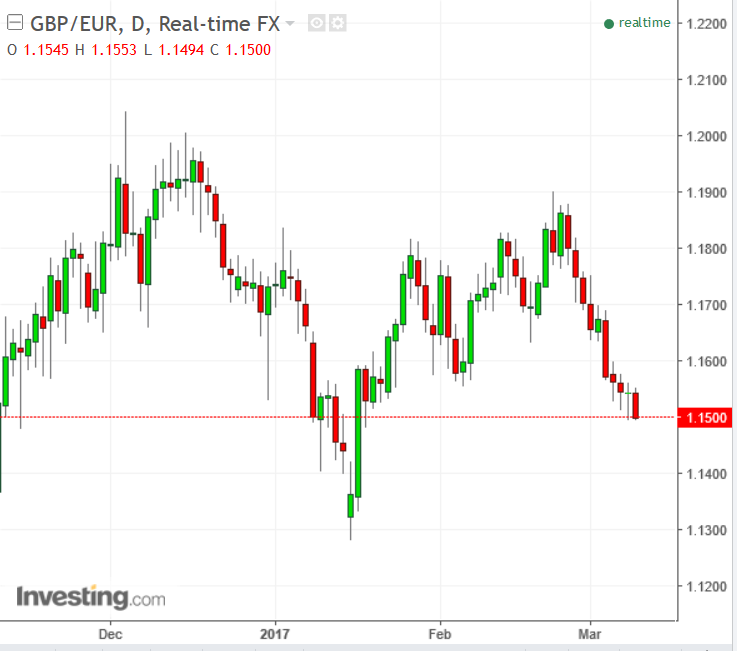
Above: The Pound to Euro exchange rate has been under pressure since late-February with little sign of let-up in the downside pressure.
The latest dip in the exchange rate comes courtesy of improved sentiment towards the Euro with the latest policy meeting at the European Central Bank hinting at better growth and rising inflation in the Eurozone over coming months.
The ECB announced the interest rate on the main refinancing operations and the interest rates on the marginal lending facility and the deposit facility will remain unchanged at 0.00%, 0.25% and -0.40% respectively.
The Bank raised its 2017 and 2018 GDP forecast by 0.1% and boosted this year's inflation forecast to 1.7% from 1.3%. They also raised their forecast next year by 0.1%.
The ECB's President Draghi said that the economic risks they have feared are less pronounced, the balance of risks have improved and said the ongoing economic expansion should be firm and broaden.
He did however hold back any Euro-phoria by warning underlying inflation pressures remain subdued and for that reason, they are looking beyond the temporary increase in inflation.
"These comments from Draghi were less dovish than most of us had anticipated but at the end of the day," says Kathy Lien, Director at BK Asset Management in New York. Lien says she believes the Euro should rise from here but its best performance will likely come in non-USD pairs.
So where sentiment towards the Eurozone is on the up, sentiment towards the UK economy remains resolutely negative with markets uncertain about the UK's economic trajectory owing to Brexit.
“Any loss of 1.1640/50 secondary support would probably be sufficient to damage the recovery sequence from 1.1300 and provoke another examination of at least 1.1500,” says technical analyst Lucy Lillicrap at AFEX. "A break below the 1.1490/1.1500 level which is only 42/32 basis points below the current 1.1532 market level, would completely, negate the uptrend, in favour of 1.1200/1.1050 instead.”
Sentiment Towards UK Remains Dour
The Pound has been falling since mid-week as sentiment towards the Chancellor’s budget flipped and soured.
UK stocks have pulled back after investors sensed a hint of negativity in the statement, although the government has also now built something of buffer having saved over 16bn in borrowing over what it expected to borrow, due to relief from referendum fears not materialising.
Nevertheless, it is the byzantine complexity of unravelling the UK from the clutches of the EU which is concerning many, along with the confusion, chaos and ultimately the uncertainty which could attend the divorce proper.
This is why the Office for Budget Responsibility downgraded growth expectations in 2018 and 2019 even though it upgraded them from, 1.4% to 2.0% in 2017.
For currency traders, there is also the monetary perspective to consider.
Given the budget wasn’t particularly generous there is now a risk that the Bank of England will have to make up the shortfall by continuing to keep interest rates low, and this ultimately will weigh on the Pound.
In a world increasingly focused on big infrastructure projects and grand designs, the Chancellor’s budget was relatively-speaking rather parochial.
Whilst it isn’t going to pile a massive load onto Sterling, it has already led to weakness against the big boys, including the Euro on Thursday morning, against which it is now trading at just 1.1500.
The big question now is will this continue through the European Central Bank’s (ECB’s) rate meeting later today?
The main factor to consider is inflation – is it rising in a sustainable manner or just because oil has gone up?
If the ECB thinks the former, then we may get a more upbeat statement from Mario Draghi at 13.30 GMT; if the latter, then Draghi is likely to hold the line and dismiss any hints of tapering QE.
“The European Central Banks monthly bond-buying program will run until at least December, slowing to 60 billion euros ($63 billion) in April from the current 80 billion euros a month. Now, even with euro-area inflation at 2 percent for the first time in four years, Draghi is expected to reiterate the plan and dismiss any calls to start the process of reining in stimulus. As evidence, he may unveil updated forecasts showing the acceleration in consumer prices won’t last,” noted Investec’s dealer “Jon”.
Eurozone data has been mixed recently – Manufacturing and Services PMI’s have risen, as has inflation and employment, but other data has fallen, notes Kathy Lien, managing director of BK Asset Management.
“More recent data like the German IFO report, trade balance and industrial production showed pockets of weakness. And that will worry a central bank that's not convinced that the rise in inflation and the general recovery is durable. So while EUR/USD could pop on upgraded economic forecasts,” said Lien.
She notes how the ECB is unlikely to want to allow the Euro to strengthen given how it has been supporting the economy at its current low levels.
“Mario Draghi will most likely talk down the currency, which could erase any earlier gains. At the end of the day, the ECB wants the euro to remain weak to support the economy and it will do everything in its power to prevent the euro from rising including downplaying or flat out dismissing upgraded inflation and GDP forecasts. EUR/USD support is at 1.05 and resistance is at 1.0640,” said Lien.
When you look at recent EU data, Lien's right, German Factory Orders did drop down massively in January, falling -7.4% month-on-month, from 5.2% prev and -2.5% forecast.
Nevertheless, Industrial Production in January rose by 2.8% from -2.4% prev when it was expected to rise by 2.5%.
If the ECB is looking for signs of sustainable growth then housing is normally a useful early indicator of economic growth.
Well, new construction projects have started to pick up recently, which is a good sign of confidence, and Eurozone Construction Output surprised meaningfully to the upside, rising 3.2% in December, when only a 0.5% rise had been expected.
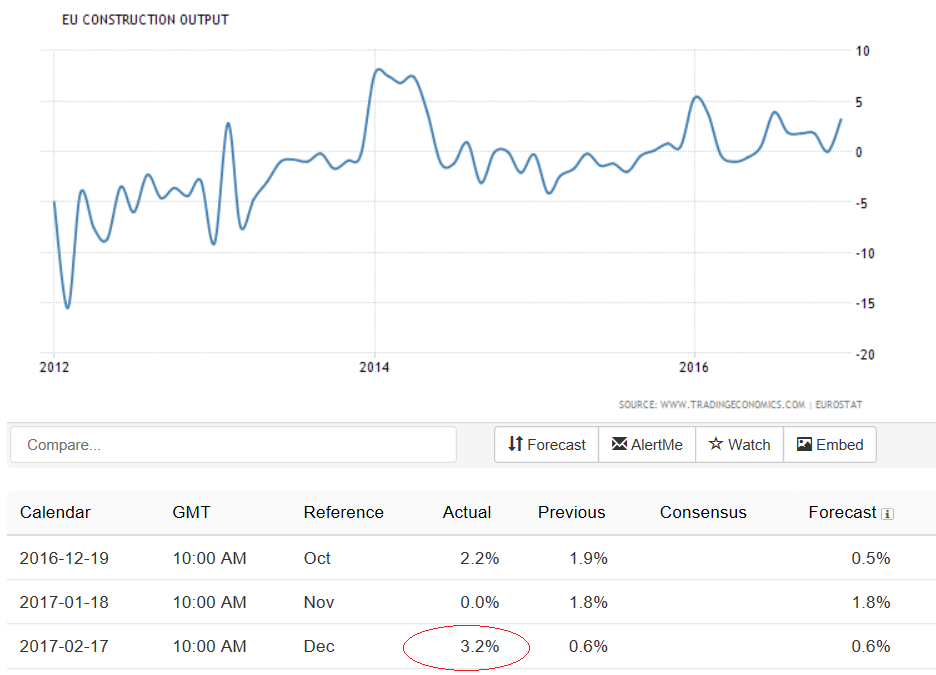
Eurozone Construction PMI remains above 50 which is in expansion territory, and although dipping last month, it has shown a steady recovery over recent years which is commensurate with a pattern of sustainable growth.
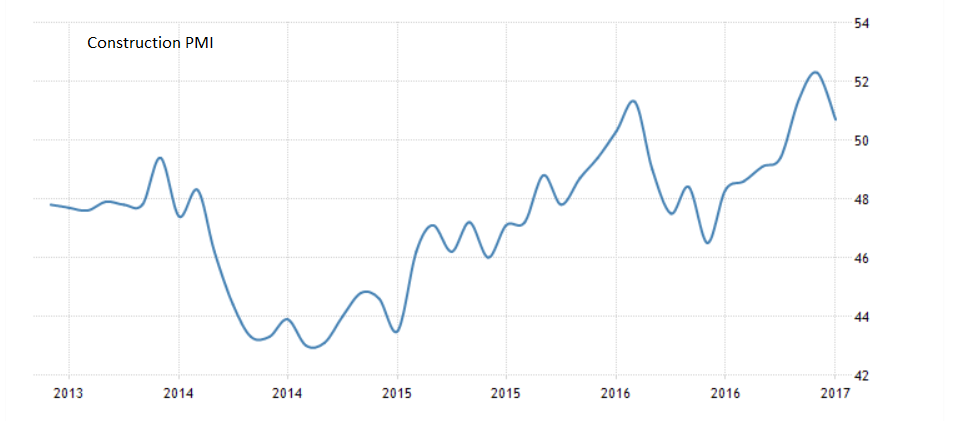
This begs the question of whether the outlook is really that bleak?
We finish with a chart showing Core inflation as this is the most important factor constraining the ECB currently.
Does it look like it is going to go down?
